
Senekal
A medium sized town. according to Wikipedia, it had 26000 inhabitants in 2011. It's geo-position: 28.3225°S, 27.6219°E and 1428m
History
 The first attempt to establish a town in the area was already made in 1862, but it took until 1873 before this became reality. The town was surveyed and laid out on the farm 'De Put' in 1873, the first 30 stands sold in May 1875, which brought in £2300. During the auction it was decided that the town should be named 'Senekal', after commandant Senekal who was from this area and died during the 2nd Basotu war in 1866. The picture above shows a view of the town in 1884, indicating that it grew fairly fast to reach this size in only 10 years. An interesting observation in connection with this picture is the hill behind the village. In this picture it is bare of any vegetation more than grass. Nowadays this hill is covered with bushes. A phenomenon which I have observed at many places on the highveld. I am not sure what the reason could be.
The first attempt to establish a town in the area was already made in 1862, but it took until 1873 before this became reality. The town was surveyed and laid out on the farm 'De Put' in 1873, the first 30 stands sold in May 1875, which brought in £2300. During the auction it was decided that the town should be named 'Senekal', after commandant Senekal who was from this area and died during the 2nd Basotu war in 1866. The picture above shows a view of the town in 1884, indicating that it grew fairly fast to reach this size in only 10 years. An interesting observation in connection with this picture is the hill behind the village. In this picture it is bare of any vegetation more than grass. Nowadays this hill is covered with bushes. A phenomenon which I have observed at many places on the highveld. I am not sure what the reason could be.
When the settlement was first established it was administered by a village management board. But in 1892 that changed to a town council when it was declared a municipality.
Churches
NG Church
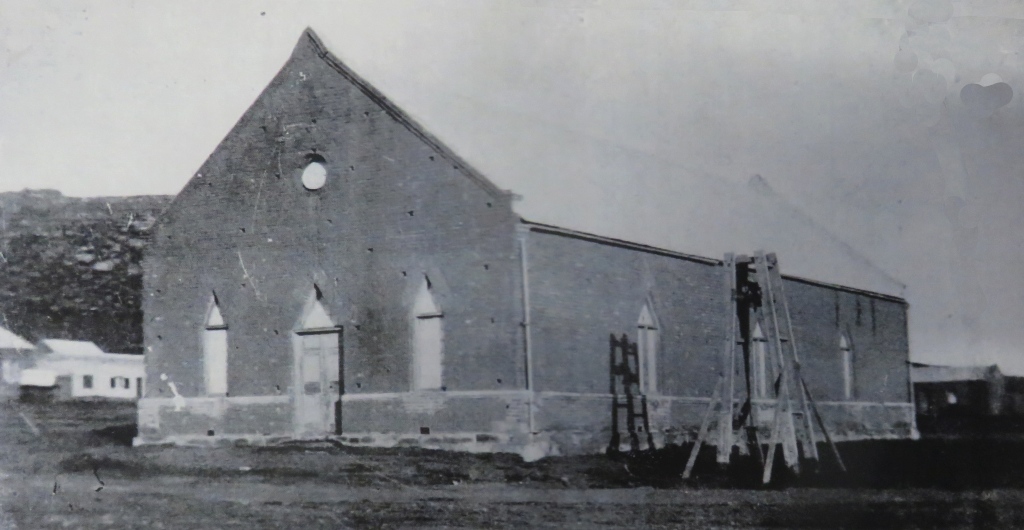
 There are actually three NG churches in Senekal, the one I am referring to here is the beauty-full sandstone church in the middle of town. The other two are newer buildings and thus not of the same interest to me.
There are actually three NG churches in Senekal, the one I am referring to here is the beauty-full sandstone church in the middle of town. The other two are newer buildings and thus not of the same interest to me.
The congregation of the NG church was formed on the 3-July-1879. To be noted is that at that time there already was a church building, it was built 1875/6, see picture on the left.
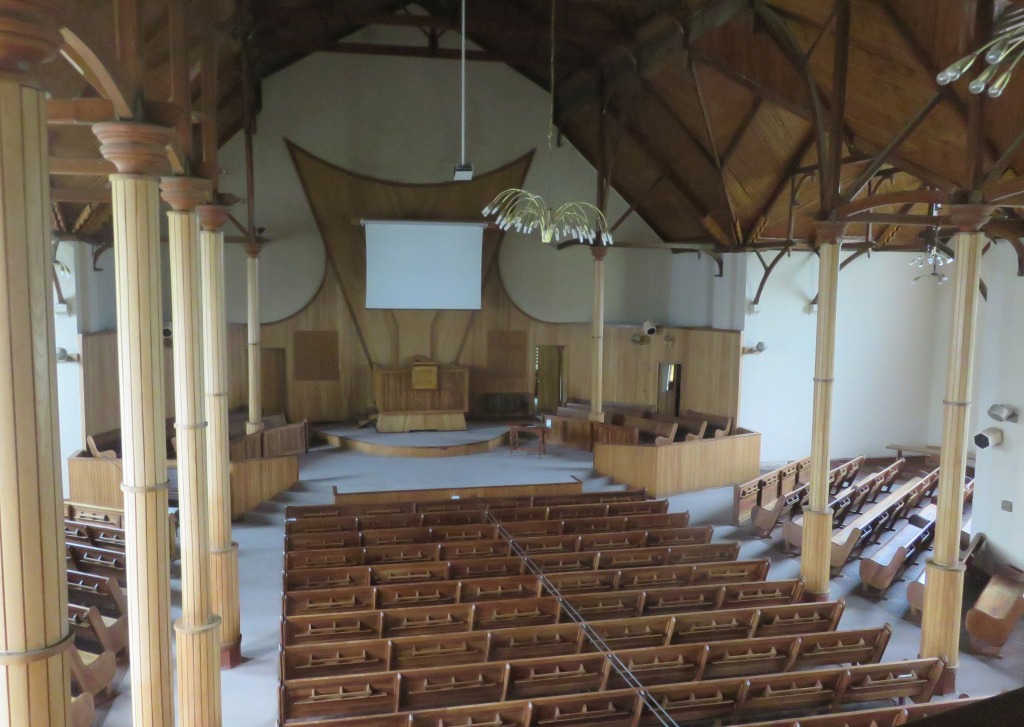 Being a new congregation they had to find a preacher. In the reformed churches this is done by calling somebody from another congregation. In this case the call went out seven times before there was an acceptance. And that was from R.H.van de Wall who was preaching in Simonstown (near Cape Town)The offer made to him was £500 per annum plus reimbursement of his travel costs. He was actually not new to the area, two years before he was the preacher at Ficksburg, and interesting there he only earned £100. His term started on the 19-August-1882 and lasted until 1896 when he resigned. Reading in ref 2, the congregation had some problems with his service and that there was disunity in his marriage.
Being a new congregation they had to find a preacher. In the reformed churches this is done by calling somebody from another congregation. In this case the call went out seven times before there was an acceptance. And that was from R.H.van de Wall who was preaching in Simonstown (near Cape Town)The offer made to him was £500 per annum plus reimbursement of his travel costs. He was actually not new to the area, two years before he was the preacher at Ficksburg, and interesting there he only earned £100. His term started on the 19-August-1882 and lasted until 1896 when he resigned. Reading in ref 2, the congregation had some problems with his service and that there was disunity in his marriage.
 Interesting to read how he and his family had to travel from Simonstown to Senekal. It was not a question of just climbing onto a train. The family took a boat from Simonstown (or Cape Town) to Durban, then a train ride on the newly constructed line to Pietermaritzburg. Here they were collected by an elder from the church to take them to Senekal. I presume that was by horse drawn carriage, it would have taken a number of days to make their way upland to Senekal.
Interesting to read how he and his family had to travel from Simonstown to Senekal. It was not a question of just climbing onto a train. The family took a boat from Simonstown (or Cape Town) to Durban, then a train ride on the newly constructed line to Pietermaritzburg. Here they were collected by an elder from the church to take them to Senekal. I presume that was by horse drawn carriage, it would have taken a number of days to make their way upland to Senekal.
With time the church became to small and a bigger one had to be constructed, the aim was to seat 800. The ground for this was donated by the municipality and the design done by the architect brothers, JH & AE Till. This was one of their earlier jobs, later they were responsible for the design of the NG church in Winburg, the town hall in Kroonstad and the Presbyterian-, Methodist- and Anglican churches in Kroonstad, amongst many other buildings in the Free State and the Transvaal.
 Of interest in the church is the organ, installed in 1911 and in the tower the clock. Unfortunately there is no name plate visible on the clock work. It is a common works driven by weights, but doesn't work any more. To me it looks like it could still be functional, but one would have to evict the pigeons from the mechanism.
Of interest in the church is the organ, installed in 1911 and in the tower the clock. Unfortunately there is no name plate visible on the clock work. It is a common works driven by weights, but doesn't work any more. To me it looks like it could still be functional, but one would have to evict the pigeons from the mechanism.
The present situation with the church building is that it belongs to a trust. How did it come to that? The Senekal congregation became to large, it became necessary to split the congregation. Senekal de Rust was ceded in 1951 and Senekal Noord in 1958. With declining memberships it was decided in 1993 to recombine Senekal central with de Rust. Facilities at the de Rust were better and thus it became the church for the new congregation. It was then considered to sell the old church, a trust was formed to save and maintain the building.
Anglican church
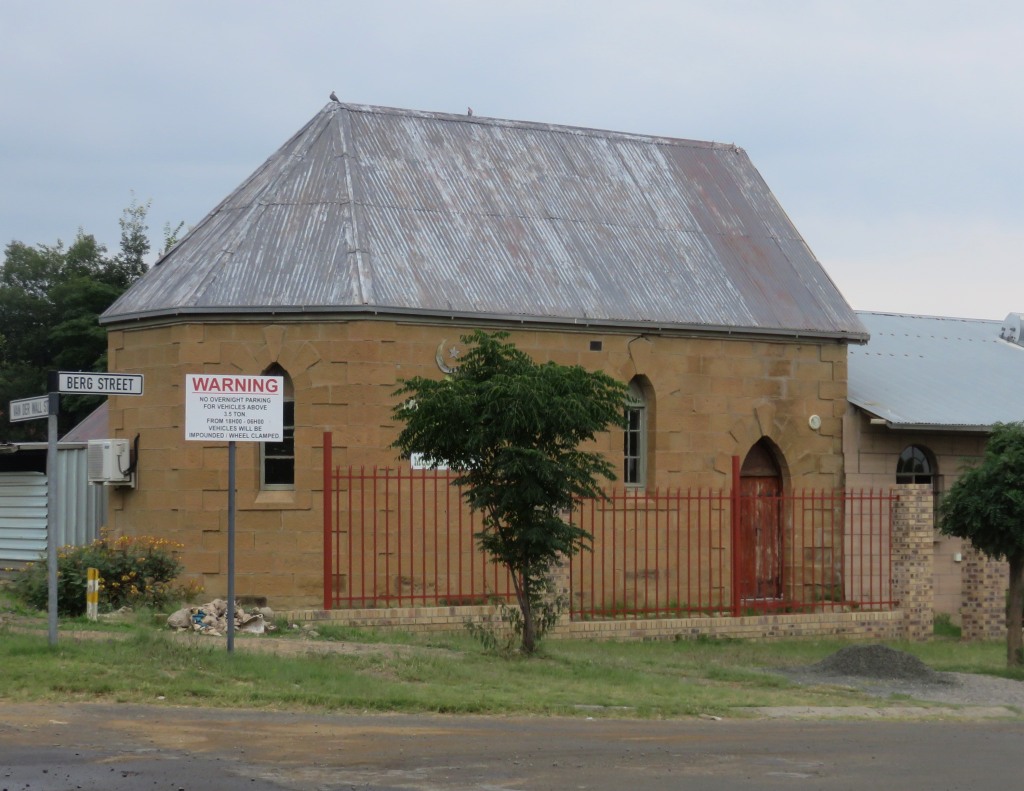 As we approached this church I said to Piet "look, there is half a church". And this is really what it looks like, the reason for this is, I presume, that the plan was to add to the church later when the congregation became larger. I can't find out when it was built, it was before 1884. It can be seen in the picture of the town taken in 1884, it is the building in the top row against the mountain, second from the left.
As we approached this church I said to Piet "look, there is half a church". And this is really what it looks like, the reason for this is, I presume, that the plan was to add to the church later when the congregation became larger. I can't find out when it was built, it was before 1884. It can be seen in the picture of the town taken in 1884, it is the building in the top row against the mountain, second from the left.
Times have changed and it is now a mosque.
Free Church
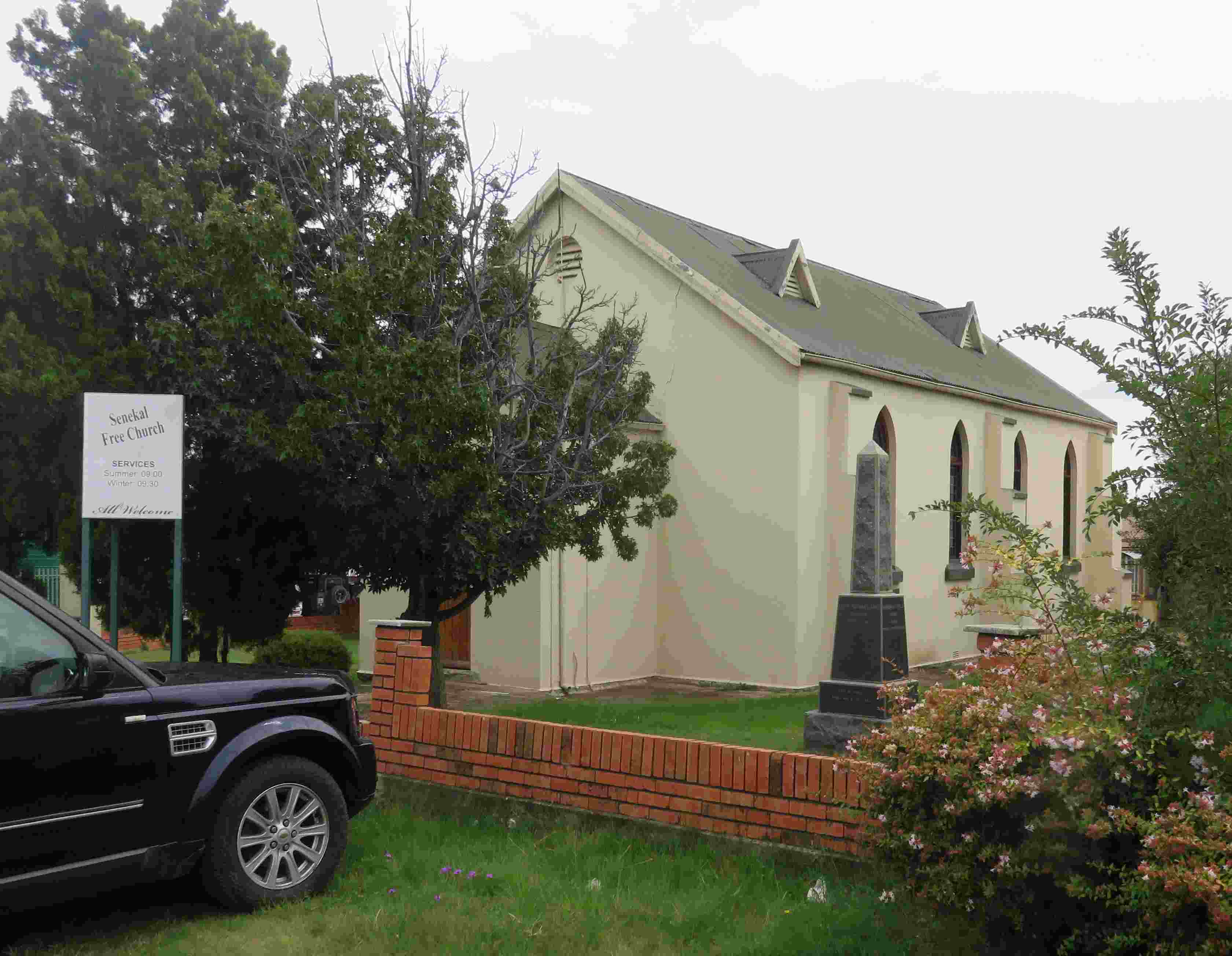 According to the corner stone this church was built in 1912 as the Free Church, the corner stone was laid by Mrs.E.Gibson in July 1912. I have no information what was this free church all about. It was fairly common in those days, where the English speaking population was very limited, to have a church building used by the Methodists, Prespertyrians and the Anglican church. In this case it could not have been the Anglicans, they had a church just over the road from about 1884. There is a picture on the Internet which shows that this was the Methodist Church. At the time of our visit (March 2022) the church was not in use,but still being maintained.
According to the corner stone this church was built in 1912 as the Free Church, the corner stone was laid by Mrs.E.Gibson in July 1912. I have no information what was this free church all about. It was fairly common in those days, where the English speaking population was very limited, to have a church building used by the Methodists, Prespertyrians and the Anglican church. In this case it could not have been the Anglicans, they had a church just over the road from about 1884. There is a picture on the Internet which shows that this was the Methodist Church. At the time of our visit (March 2022) the church was not in use,but still being maintained.
A monument in the church yard commemorates soldiers from the town who died during WW2, in the East Africa and North African campaigns. The names on the stone are:
Pte Charles Robert David Harris No 21652 President Steyn Regiment - 1941
Pte George Arthur Harris No 21651 President Steyn Regiment - 1941
Kanr Roelof Nikolaas Viljoen No 20123 4de Veld Brigade 12de Battery - 1940
Pte Edward Gera'd Gower No 21650 President Steyn Regiment - 1941
Leut Gordon Nathan Lazar 1941 SAAF
Gereformeerde Kerk
 The Gereformeerde Kerk is one of the three Afrikaans sister churches.It is the one with the least membership and in fact it doesn't exist in Senekal any more.
The Gereformeerde Kerk is one of the three Afrikaans sister churches.It is the one with the least membership and in fact it doesn't exist in Senekal any more.
I don't know when it had its beginning in Senekal, members of the Gereformeerde Kerk in Seneka used to be part of the Ficksburg congregation. But, they did have their own church services here by utilising the church hall of the NG church. It was 1949 that this attractive church was build, but only in 1961 did they split off from Ficksburg.
Over the years, as happened to most churches in the rural areas, their membership started to decline. According to Wikipedia in 2015 they had 49 members and by 2020 this number was down to 10, mostly widows. It was then decided to disband and, I think, rejoin Ficksburg. But, somehow there is enough strength to maintain the building and the garden.
the Petrified Forest
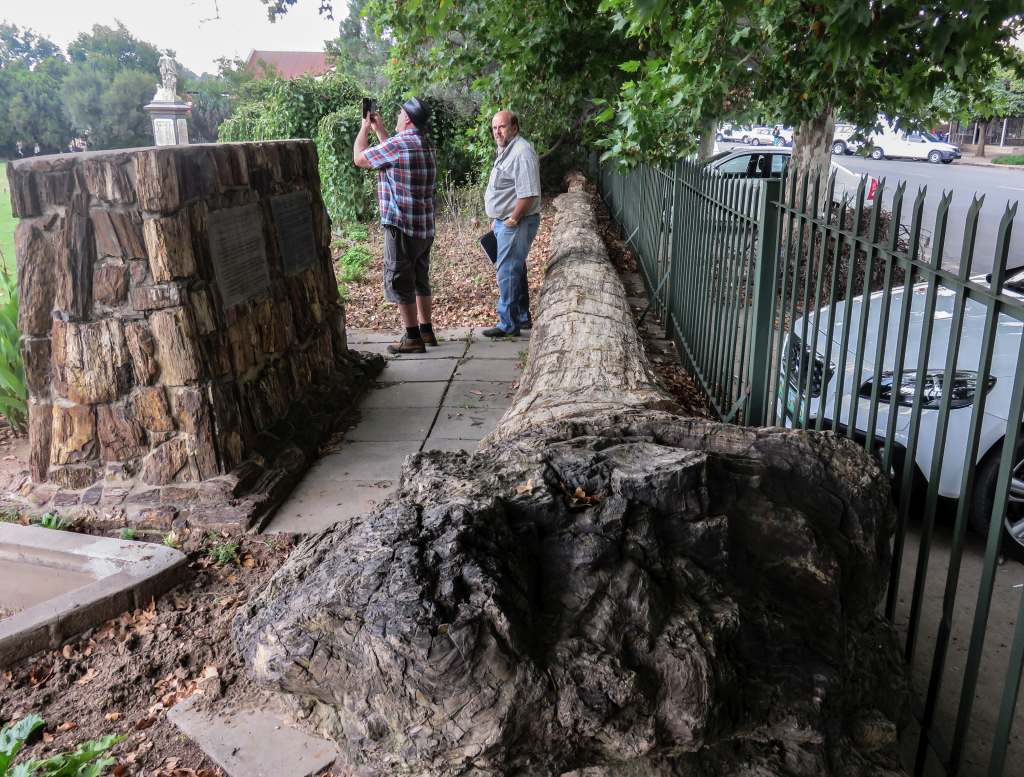
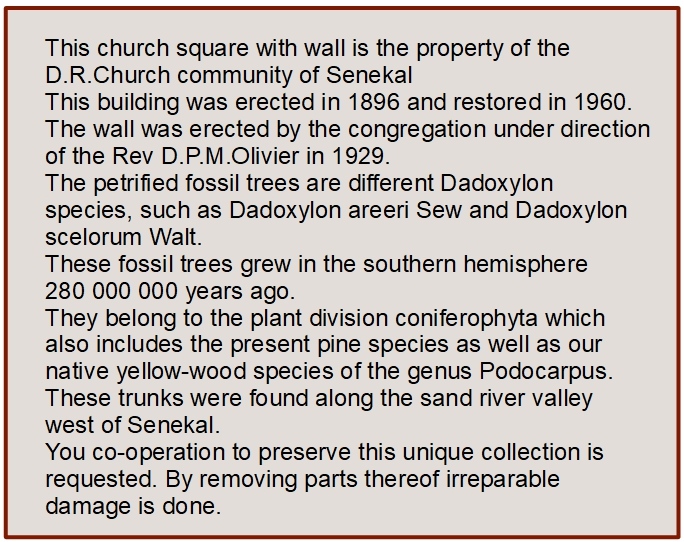 Most likely the best known feature of Senekal. That is the wall of petrified trees around the church square. I don't have to write the whole story, its all written already on a plaque at the longest tree on the east side of the square.
Most likely the best known feature of Senekal. That is the wall of petrified trees around the church square. I don't have to write the whole story, its all written already on a plaque at the longest tree on the east side of the square.
the Free Mason Hall

 The Free Masons are still active in Senekal. The building they are using, according to the inscription, was first built in 1914 and extended in 1926.
The Free Masons are still active in Senekal. The building they are using, according to the inscription, was first built in 1914 and extended in 1926.
the Battle at Bidulphsberg
Senekal was occupied by British forces on the 24-May-1900, they were led by General Rundle. The Boer forces had withdrawn towards the East with the aim of blocking the advance of the British to Bethlehem. The commandos had spread along a half moon circle encompassing Tafelkop, Platkop and Bidulphsberg.
The aim of Gen Rundle was to secure the right flank of Lord Robert's advance to Pretoria. Thus he had to deal with the enemy as they were found. There were two routes, either to the south of Bidulphsberg along the road or passing the berg on the north side. The decision was made after a message arrived from Lieutenant colonel Spragge who was in trouble at Lindley and was asking for help.
Rundle could not spare any troops to sent to Lindley, he decided to push north towards Lindley as a show of force to detract the Boers from their target. But the real aim of Rundle was to use the northern route around Bidulphsberg to attack the Boers. This he explained in a telegraph message to General Brabant. It is almost certain that the message was read by the Boers by tapping in on the telegraph poles. They could thus prepare themselves for an assault on the northern flank of the berg.
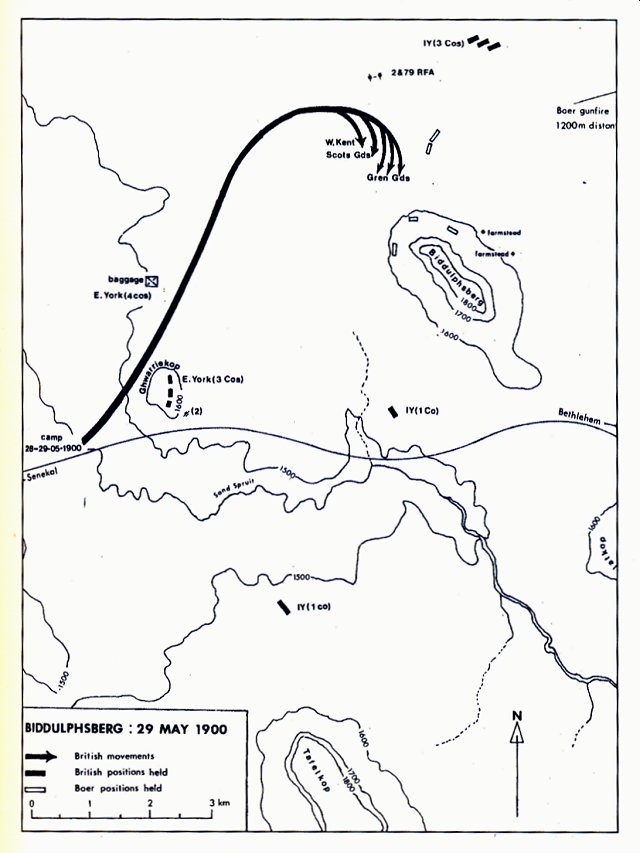 The movement of the British forces and the defensive position of the Boers can be seen on the map borrowed from ref 4. The day of the battle came on the 29-May and started with an exchange of artillery fire. The duel of the canons carried into the afternoon with the British infantry moving forward. Most of the Boer forces were well hidden in a donga and kept out of sight until the British came well into firing range. The battle became very difficult for the British and became worse when a veld fire started behind their lines moving towards them. There is, of course, speculation about who started the fire. The most logical explanation is that it was an accident. Losses amongst the British lines were heavy and the general eventually ordered his troops to fall back.
The movement of the British forces and the defensive position of the Boers can be seen on the map borrowed from ref 4. The day of the battle came on the 29-May and started with an exchange of artillery fire. The duel of the canons carried into the afternoon with the British infantry moving forward. Most of the Boer forces were well hidden in a donga and kept out of sight until the British came well into firing range. The battle became very difficult for the British and became worse when a veld fire started behind their lines moving towards them. There is, of course, speculation about who started the fire. The most logical explanation is that it was an accident. Losses amongst the British lines were heavy and the general eventually ordered his troops to fall back.
After the battle the Boers went out to retrieve their wounded, but also to help the wounded of the enemy to get them out of the path of the fire and to make them comfortable until the British ambulance could collect them. A ceasefire was agreed on for the next day to retrieve the bodies and to remove the wounded.
An extract from a letter written by one of the soldiers, Harry Ernest Maile, to a friend, he describes the scene after the battle:
The Boers came out of their trenches and helped us. They acted like Christians. One got me water , unrolled my coat and a dead man's next to me and wrapped me up with both. The Boer to the wounded is a true hearted being. Though he smashed a lot of us with explosive and soft nosed bullets. Altogether I have got 10 wounds and severely burned. I am in Hospital in Senekal. The church is made into a hospital.
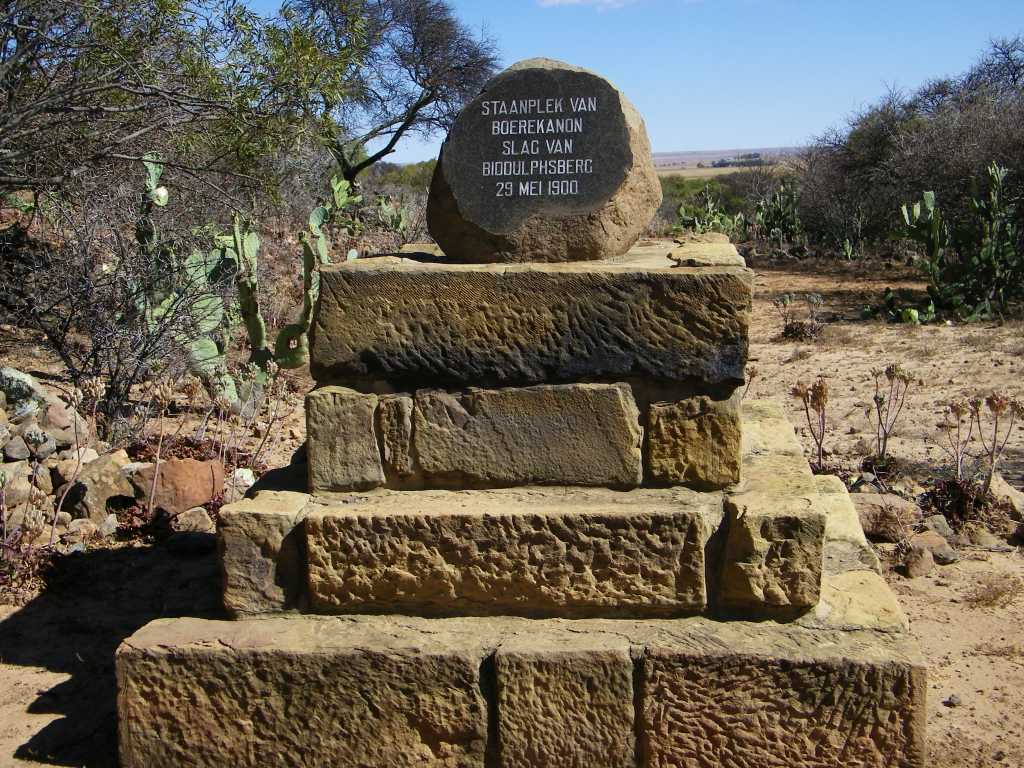 Losses on the British side were heavy, 129 wounded and 38 dead. Only two dead are known on the Boer side. One of them was General de Villiers, the leader of the commandos fighting at Bidulphsberg. A memorial stone was erected at the berg, the inscription translated reads as follows:
Losses on the British side were heavy, 129 wounded and 38 dead. Only two dead are known on the Boer side. One of them was General de Villiers, the leader of the commandos fighting at Bidulphsberg. A memorial stone was erected at the berg, the inscription translated reads as follows:
In memory of General A.I.de Villiers. He was the commander of the Boer commandos of Senekal, Ladybrand, Ficksburg, Smithfield, Wepenar and Thaba Nchu (+-400 men), which on the 29 May 1900 defeated the English force at the battle of Bidulphsberg. He was seriously wounded and was taken to the English hospital in Bloemfontein, where he died a few days later. His grave could to this day not be found. Senekal Bidulphsberg monument
And after the battle? It almost looks like it was an empty victory for the Boers. They left their position and went south to help with the defence of the southern flank. This resulted in them being encircled in the Brandwaterbasin and eventual surrender.
A monument has been erected at the position of one of the Krupp canons under the command of JJ Smith. This was the canon that fired the first shot in answer to the British cannonade. Also near this monument is the memorial stone of AI de Villiers mentioned above.
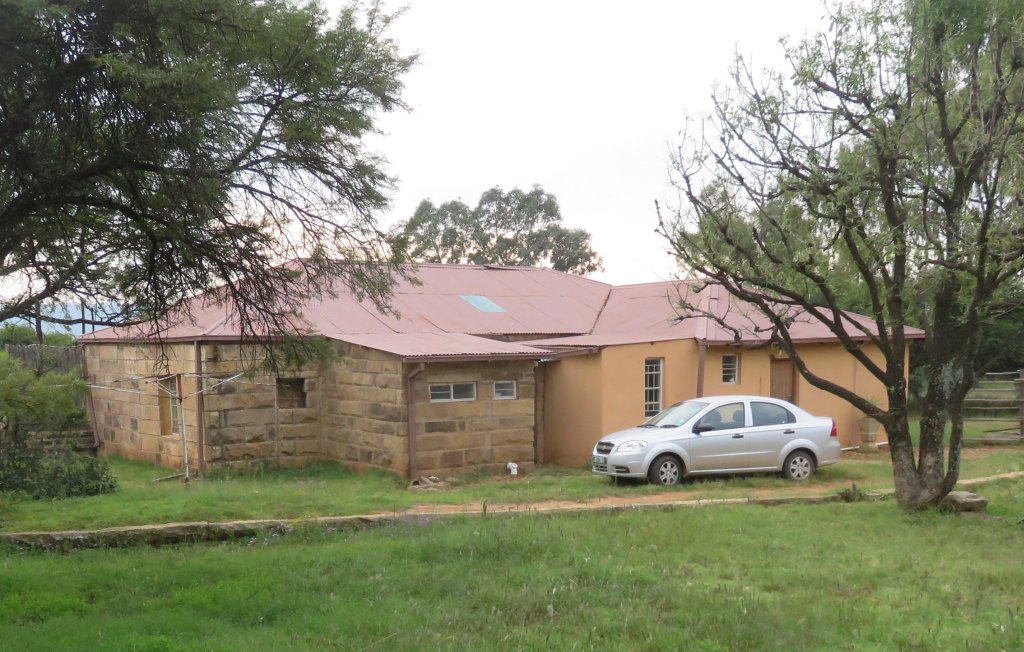
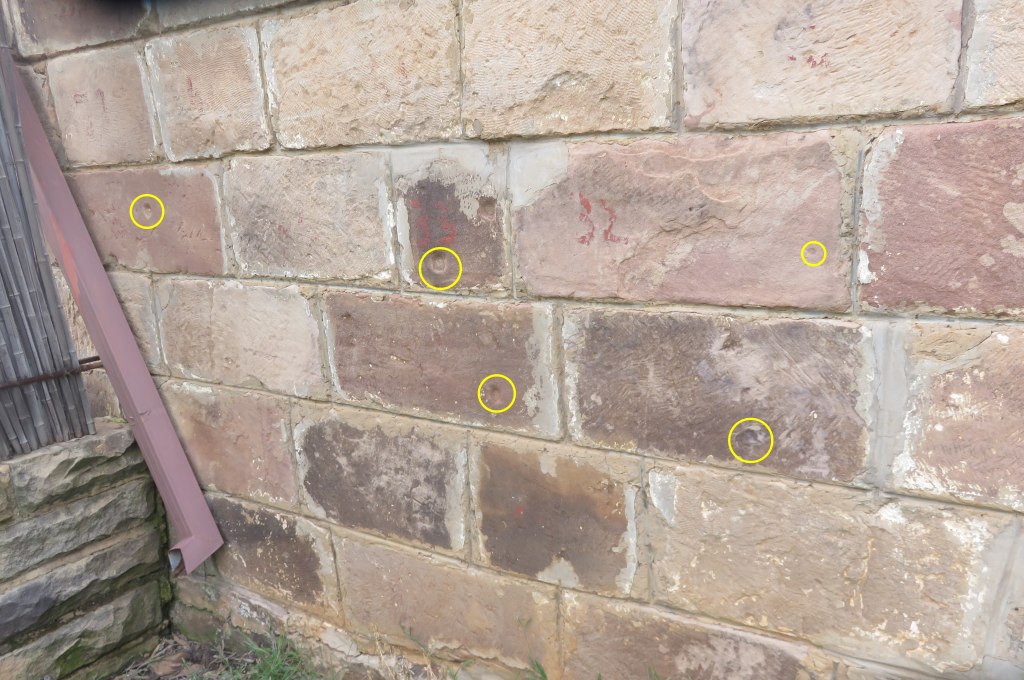 A few metres from the monument was the house which was occupied by J.S.Erasmus at the time of the battle. It took some convincing to make the elderly Erasmus and wife and daughter to vacate the place for the duration of the battle and to seek refuge a distance away from the battle field. Just as well, because the house did come under fire and was severely damaged during the encounter. Using the stones from that house a new one was built down the slope from the original, which is the house in the picture. Shrapnel marks. can still be seen on the wall facing north.
A few metres from the monument was the house which was occupied by J.S.Erasmus at the time of the battle. It took some convincing to make the elderly Erasmus and wife and daughter to vacate the place for the duration of the battle and to seek refuge a distance away from the battle field. Just as well, because the house did come under fire and was severely damaged during the encounter. Using the stones from that house a new one was built down the slope from the original, which is the house in the picture. Shrapnel marks. can still be seen on the wall facing north.
Ossewa-brandwag
 Another point of interest at the Bidulphsberg is the hide-out of the Ossewaa-brandwag during WW2.
Another point of interest at the Bidulphsberg is the hide-out of the Ossewaa-brandwag during WW2.
Ossewa-brandwag was an organisation formed early in 1939 to advance Afrikaaner culture and nationalism. When war broke out, the organisation was opposed to South Africa joining the British in the conflict against Germany. A smaller grouping formed within the organisation which called themselves the 'Stormjaers' (the storm chasers). They were prepared to use force and violence to hamper the South African war effort and did carry out some attacks on infrastructure. But it must be said, the leader of Ossewaa, Jan van Rensburg, was opposed to the use of force
Of course, the security forces tried to find them to put them into internment camps. One of the hide-outs was on the side of the Bidulphsberg, see picture.
the Railway
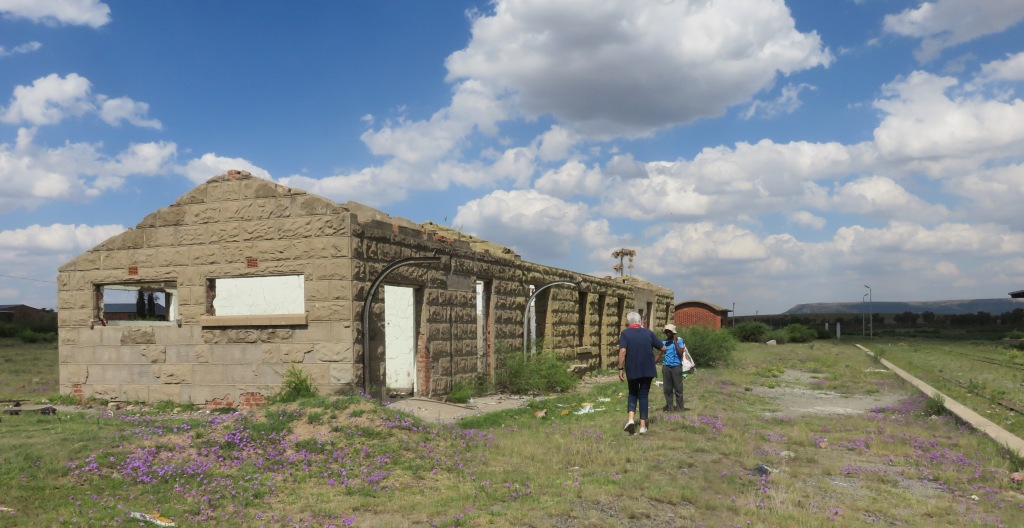
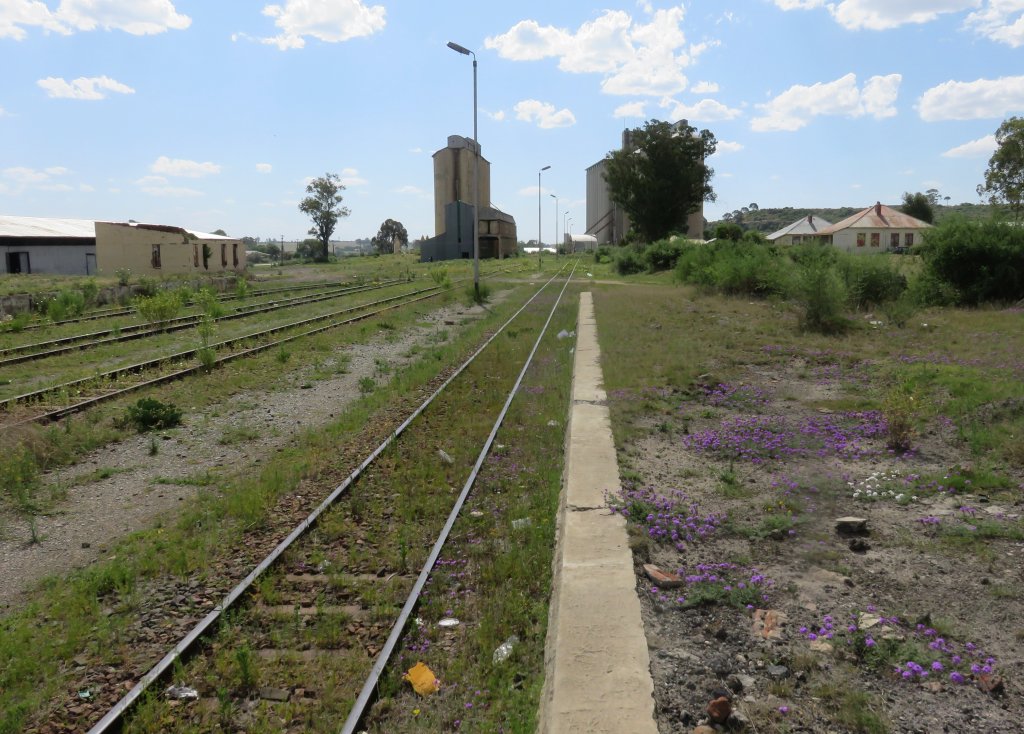 A rail connection had been under discussion as early as 1888, there was an election to the Volksraad fought by proponents and opponents of the rail way. At that election the opponent, M.Heynes, won the mandate. But that did not end the discussion and slowly the opponents were won over. The source is not very clear on this, it looks like in 1895 the Volksraad decided to a go-ahead with the rail connection to Bloemfontein. I don't know what happened after that? Obviously nothing until 1913.
A rail connection had been under discussion as early as 1888, there was an election to the Volksraad fought by proponents and opponents of the rail way. At that election the opponent, M.Heynes, won the mandate. But that did not end the discussion and slowly the opponents were won over. The source is not very clear on this, it looks like in 1895 the Volksraad decided to a go-ahead with the rail connection to Bloemfontein. I don't know what happened after that? Obviously nothing until 1913.
Senekal got connected to the railway system in 1913, when the line from Arlington was commissioned. Later that rail was extended to reach Marquard in 1931. The station in not in use any more, but inspecting the rails it looks like there is still traffic on the line. Whilst driving around looking for the station we stopped at one time to ask a local. Jenny asked "Meneer waar is die stasie?" (Mister, where will we find the station?), we got a funny look and a counter question "Nou, wat soek julle daar by die stasie?" (Now, what would you be looking for at the station?). After some explanation we got the answer and went off to inspect what has remained of the station. Not much, just ruins of buildings.
Cemetery
An interesting place, because it covers most events of the history of the Freestate.
Jewish graves
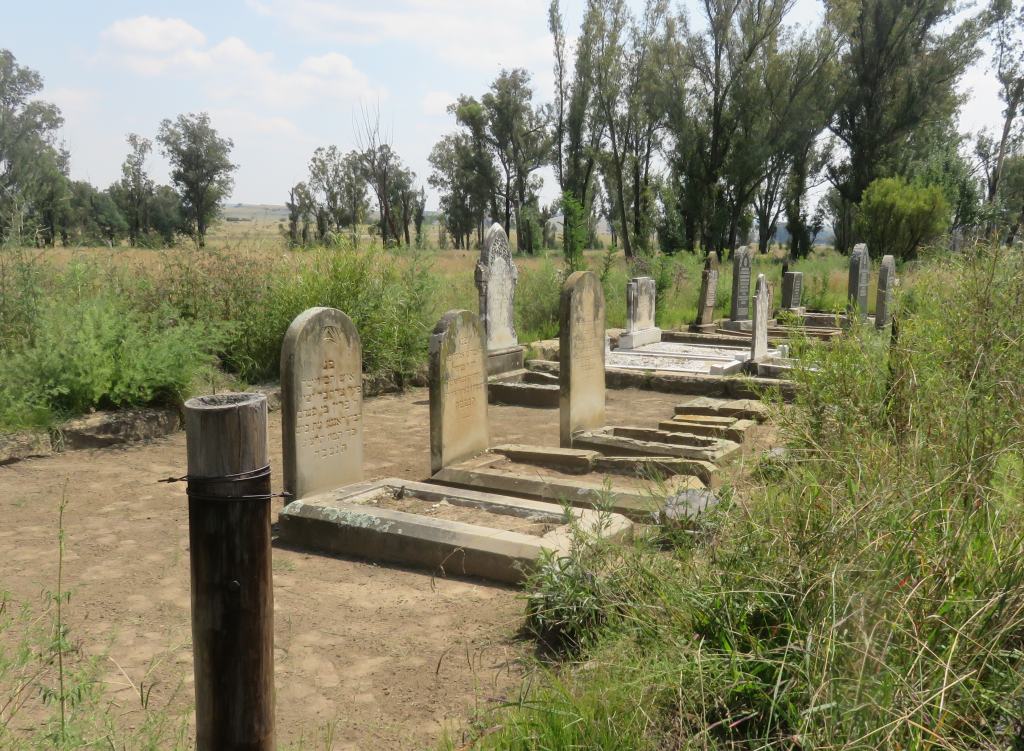
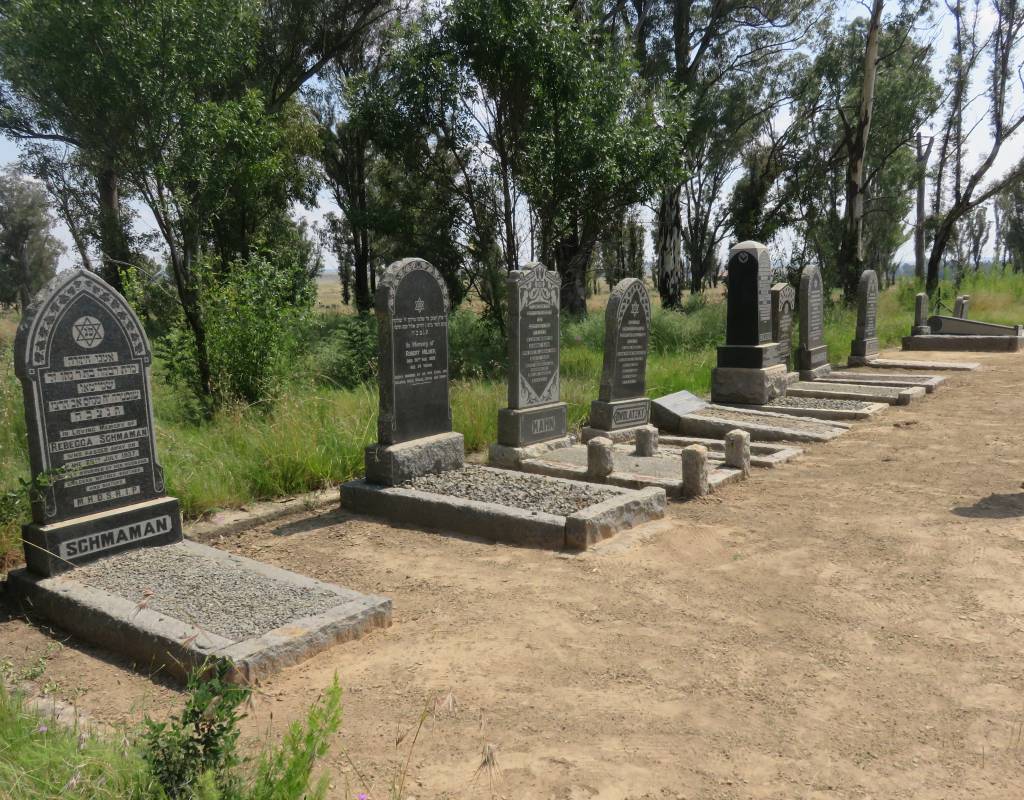 There are two Jewish sections in this cemetery, see pictures.
There are two Jewish sections in this cemetery, see pictures.
It looks like the one on the left has the older graves. There I found three gravestones with German writing on it, that, of course, drew my special attention. One side was in Hebrew and the other side in German. The first gravestones reads as follows, semicolon indicating line break. Paul Lange; geb. 9 Okt 1858; gest. 19 Juli 1933; hier ruht ein edler Mann; Ein gütiger Vater; Jeder hatte ihn lieb; Friede seiner Asche; Ehre seinem Andenken. Translated: here rests a noble man; a kind father; everybody loved him; peace his ashes; honour his memory. Next to his grave is that of his wife, Ernstine Lange, née Hirschman, she was born in 1867 and died 1898. And the third German grave stone is that of one of their children who died at less than one year old. Obviously Paul and Ernstine originally came from Germany. So far, I have not found any details. But I did read that he was a member of the town council in 1903/04, 1908/10 and mayor in 1909.
Anglo-Boer war
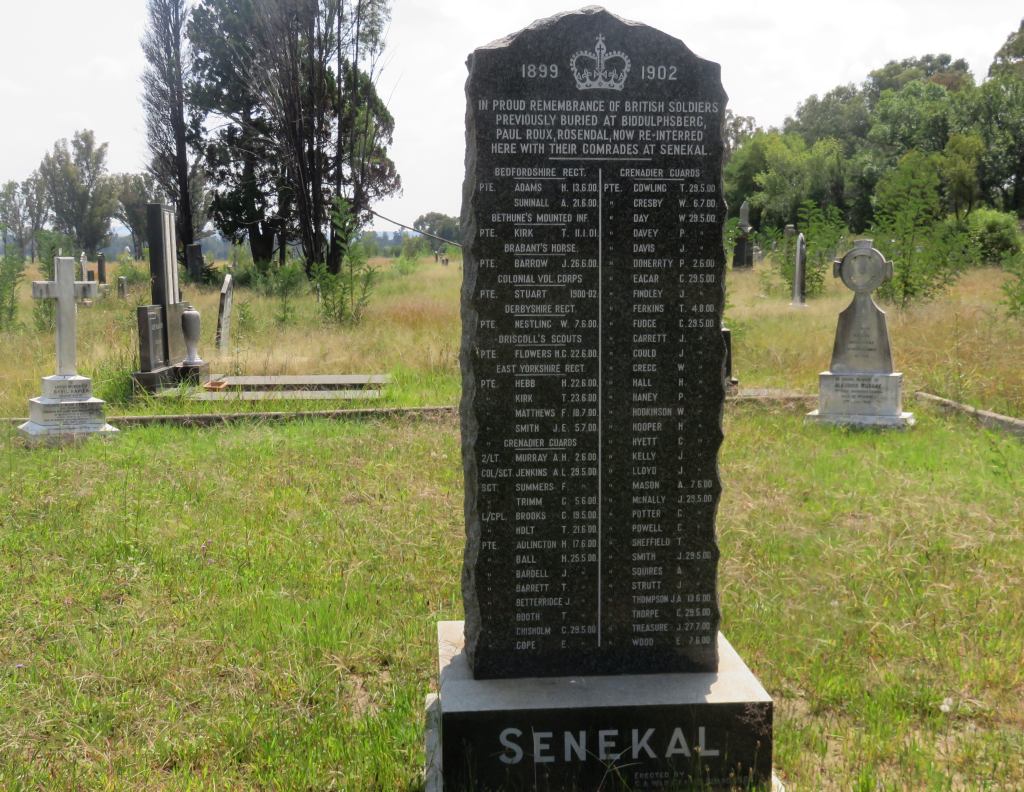 Most of the British dead from the battle at Bidulphsberg have found their last resting place here. Not only those, also others from the area. As the inscription on the central stone states:
Most of the British dead from the battle at Bidulphsberg have found their last resting place here. Not only those, also others from the area. As the inscription on the central stone states: 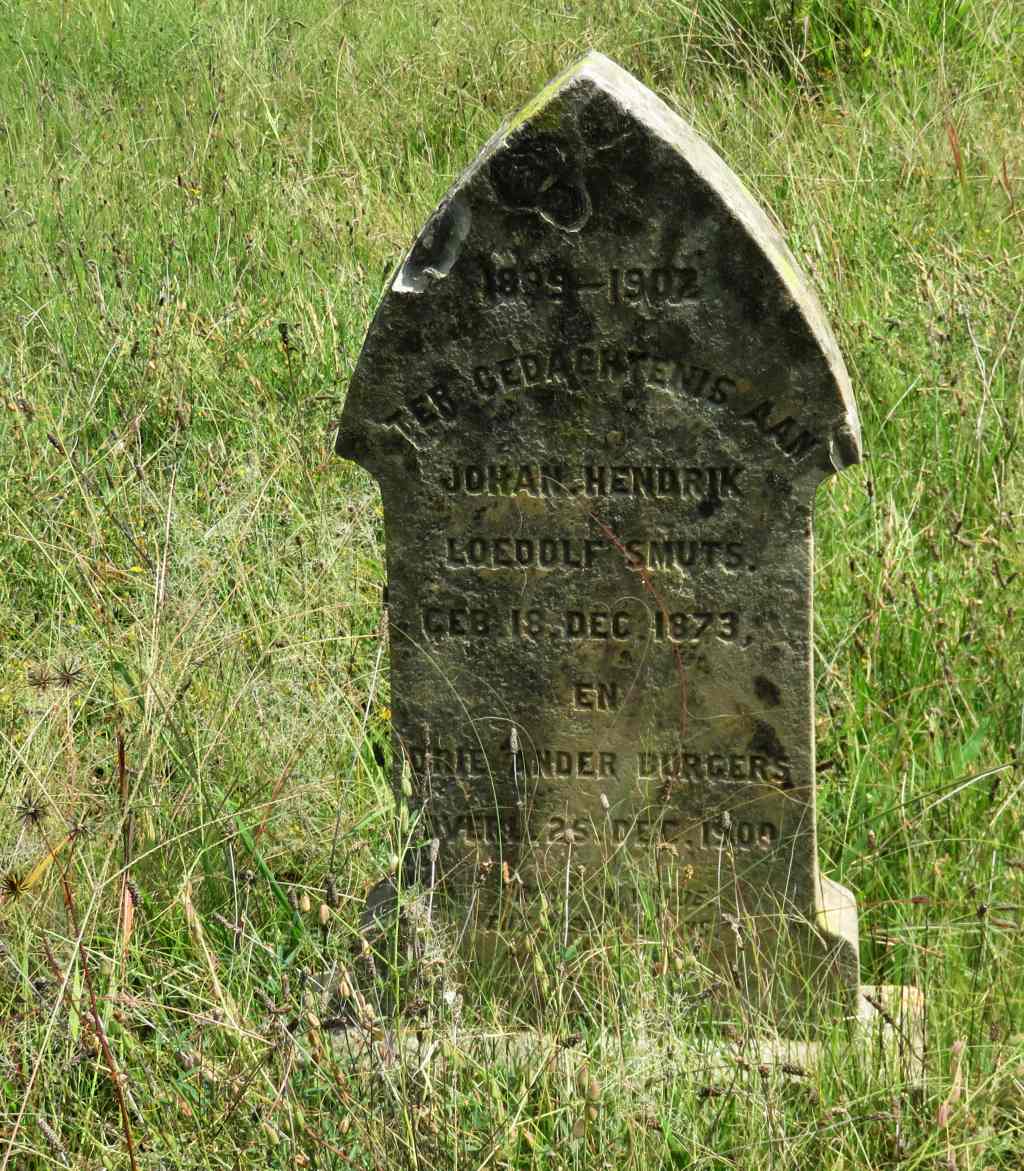 In proud remembrance of British soldiers previously buried at Bidulphsberg, Paul Roux, Rosendal, now re-interred here with their comrades at Senekal.
In proud remembrance of British soldiers previously buried at Bidulphsberg, Paul Roux, Rosendal, now re-interred here with their comrades at Senekal.
From the side of the Boers I found the one grave with the inscription as follows: 1899-1902; ter gedachtenis aan; Johan Hendrik; Loedolf Smuts; geb 18 Dec 1873; en; drie ander Burgers; overl. 25 Dec 1900. It is thus the grave of JHL Smuts and three other citizens, they all died on the 25 Dec 1900. It seems to point to a specific event that happened on the 25 Dec, I'll have to do some research.
1914 Rebellion
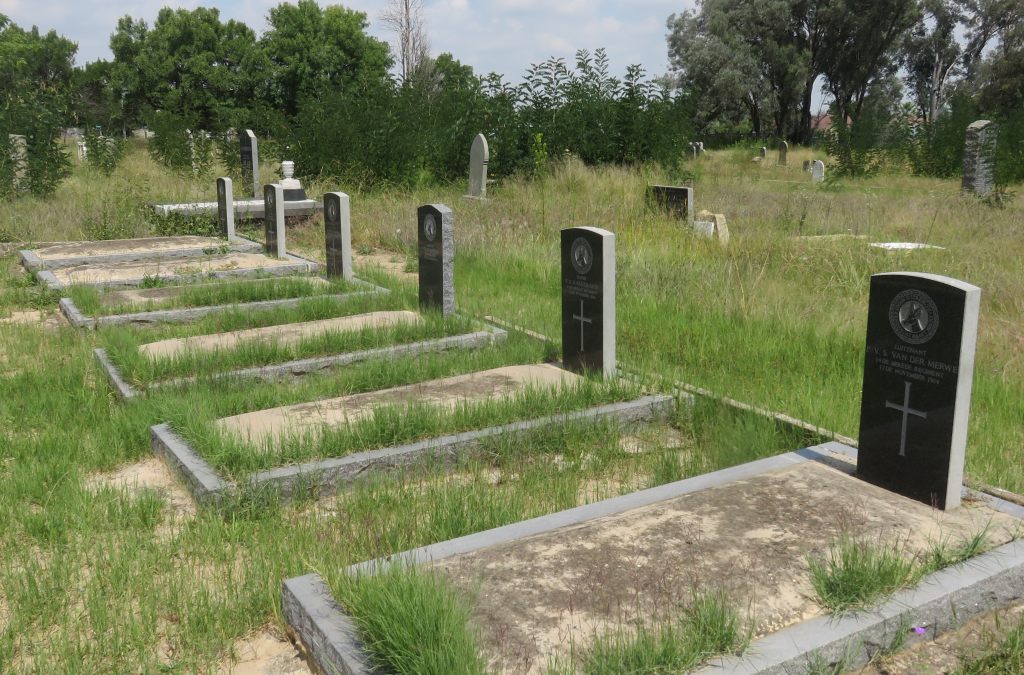
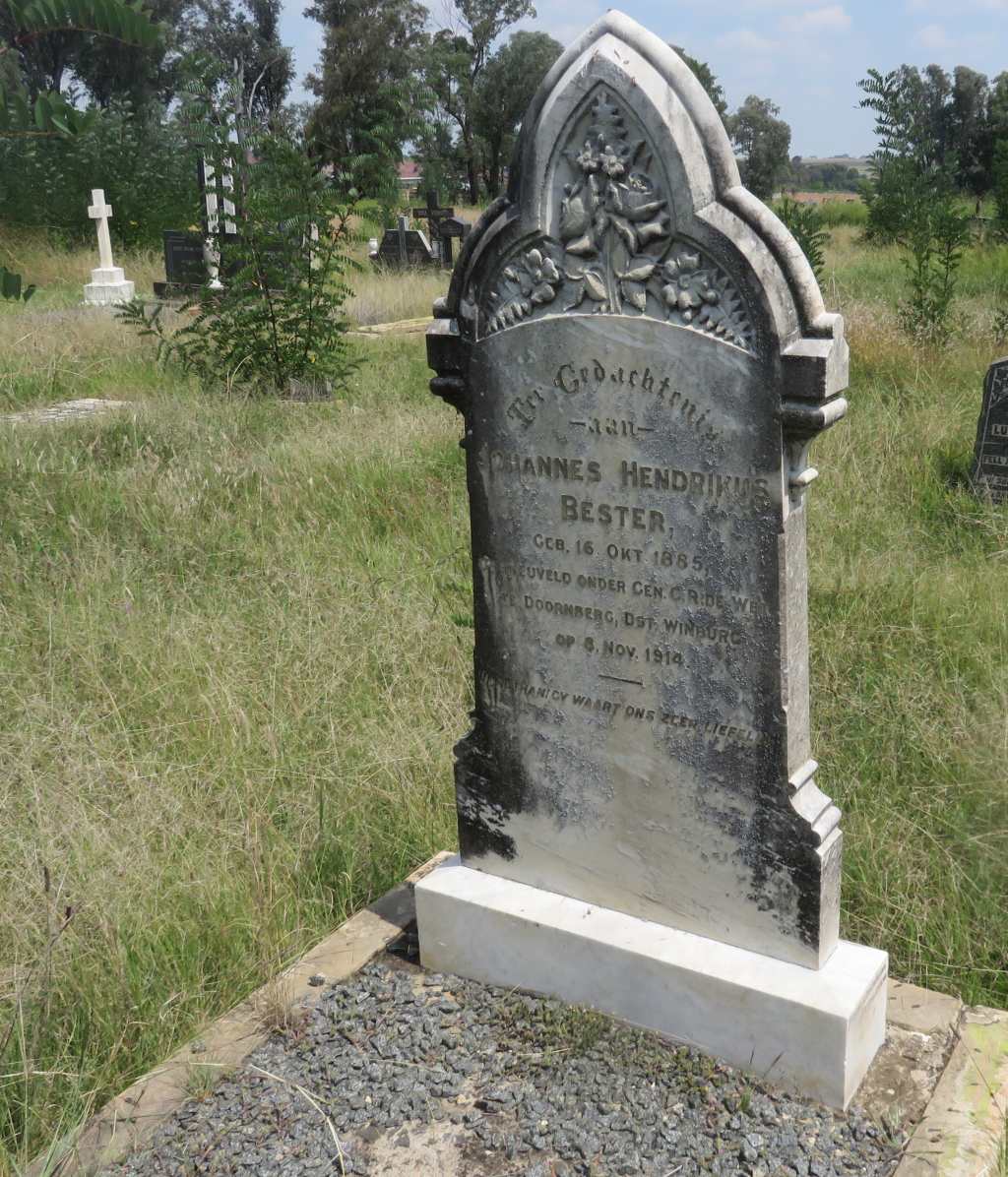 There are a series of graves (six), all with the same style gravestone. These are soldiers who died in the rebellion fighting on the side of the government. Searching through the cemetery I also came across graves of rebels. The one in the picture is that of J.H.Bester, the inscription reads (semicolon indicates a line break): Johannes Hendrikus; Bester, geb 16 Okt 1885; gesneuveld onder Gen C.R. de Wet; te Doornberg, Dist Winburg; op 8 Nov 1914. No need to translate this, just the word 'gesneuveld', it means killed in action.
There are a series of graves (six), all with the same style gravestone. These are soldiers who died in the rebellion fighting on the side of the government. Searching through the cemetery I also came across graves of rebels. The one in the picture is that of J.H.Bester, the inscription reads (semicolon indicates a line break): Johannes Hendrikus; Bester, geb 16 Okt 1885; gesneuveld onder Gen C.R. de Wet; te Doornberg, Dist Winburg; op 8 Nov 1914. No need to translate this, just the word 'gesneuveld', it means killed in action.
An other grave identified as originating from the rebellion is that of A.P.Cronje, geb 18 Feb 1887; gesneuveld 20 Nov 1914. Three of the government graves have the same date of death. Information I found was that there was the battle of Hilly Side on that date. This was a time after the defeat of the rebellion at Mushroom Valley when the government forces mopped up remaining resistance in this part of the Free State. But, I have no further details.
Ernst Bremer
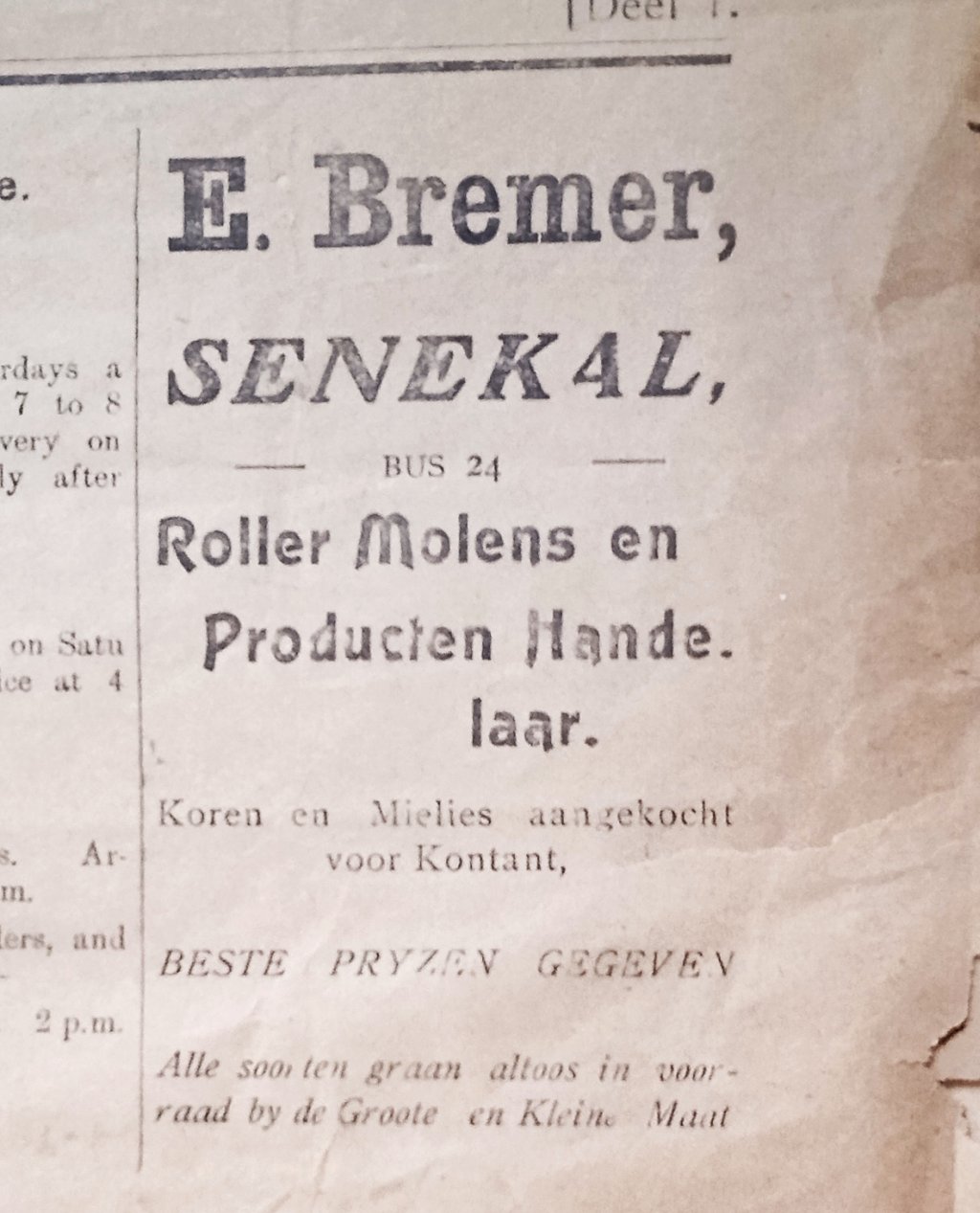
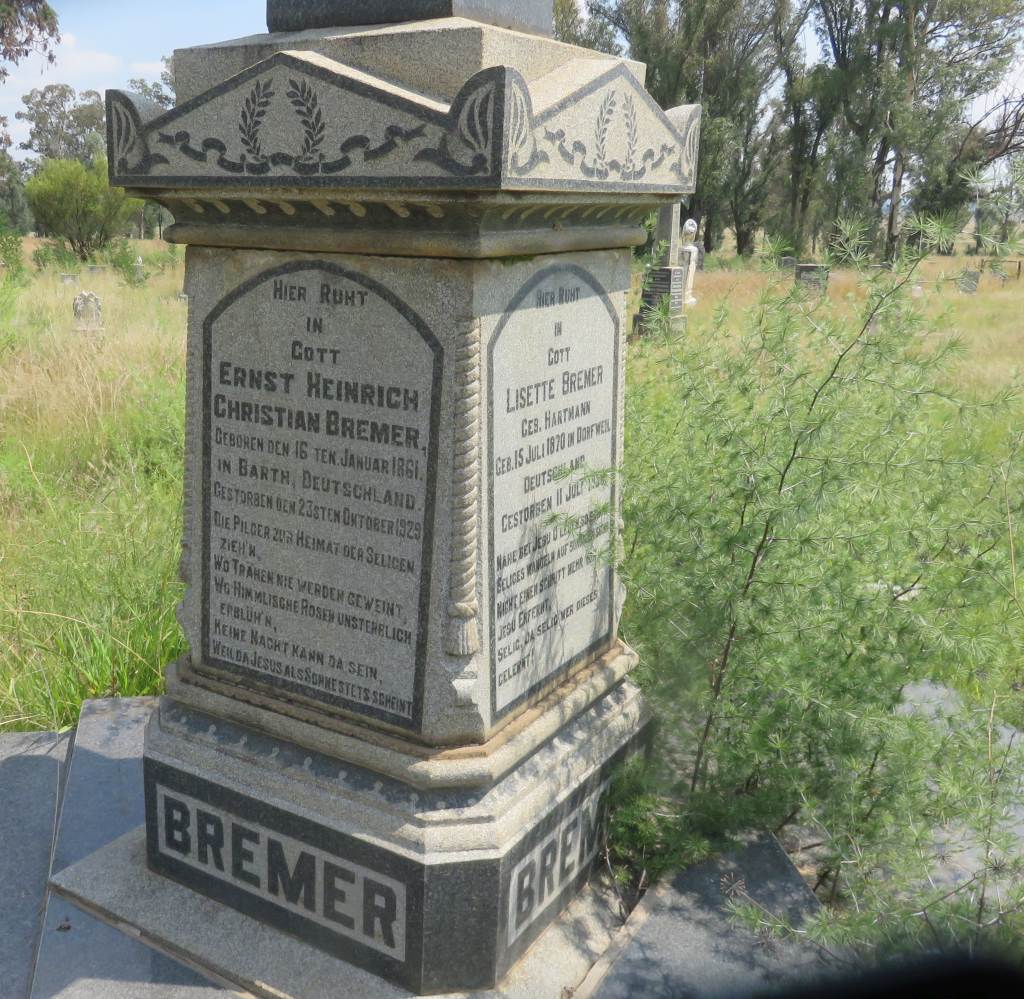 The grave of Ernst Bremer and his wife drew my attention, naturally, because they had come from Germany.The inscription is in German and translated reads (semicolon indicates a line break): Here rests in God; Ernst Heinrich; Christian Bremer; born 16 January 1861; in Barth, Germany; died 23 October 1929. This is followed by a verse which I find very difficult to translate, it is poetic German. And his wife, Lisette Bremer; nńe Hartman; born 15 July 1870 in Dorfweil; Germany; died 11 July 1958. Barth is in the north of Germany on the Baltic coast. According to ref 2 the Bremers came to Senekal in 1895 and bought or established a grain mill. It became one of the successful businesses of the town. The advertisement on the right is from the 'DE SENEKAL en Distriks Vertegenwoordiger Vrijdag, Maart 18, 1910'.
The grave of Ernst Bremer and his wife drew my attention, naturally, because they had come from Germany.The inscription is in German and translated reads (semicolon indicates a line break): Here rests in God; Ernst Heinrich; Christian Bremer; born 16 January 1861; in Barth, Germany; died 23 October 1929. This is followed by a verse which I find very difficult to translate, it is poetic German. And his wife, Lisette Bremer; nńe Hartman; born 15 July 1870 in Dorfweil; Germany; died 11 July 1958. Barth is in the north of Germany on the Baltic coast. According to ref 2 the Bremers came to Senekal in 1895 and bought or established a grain mill. It became one of the successful businesses of the town. The advertisement on the right is from the 'DE SENEKAL en Distriks Vertegenwoordiger Vrijdag, Maart 18, 1910'.
References
Ref 1.: Standard Encyclopedia of Southern Africa, Nasou Limited, 1974
Ref 2.: JJ Oberholster and Jan Stemmet, 'Senekal se eerste honderd jaar', 1977
Ref 3.: 'Kerk Souvenir van Senekal-Vyftigjarige Bestaan, Nasionale Pers, 1929
Ref 4.: SA Watt, 'THE SKIRMISH AT SENEKAL: THE BATTLE OF BIDDULPHSBERG, MAY 1900', Military History Journal Vol 8 No 6 - December 1991